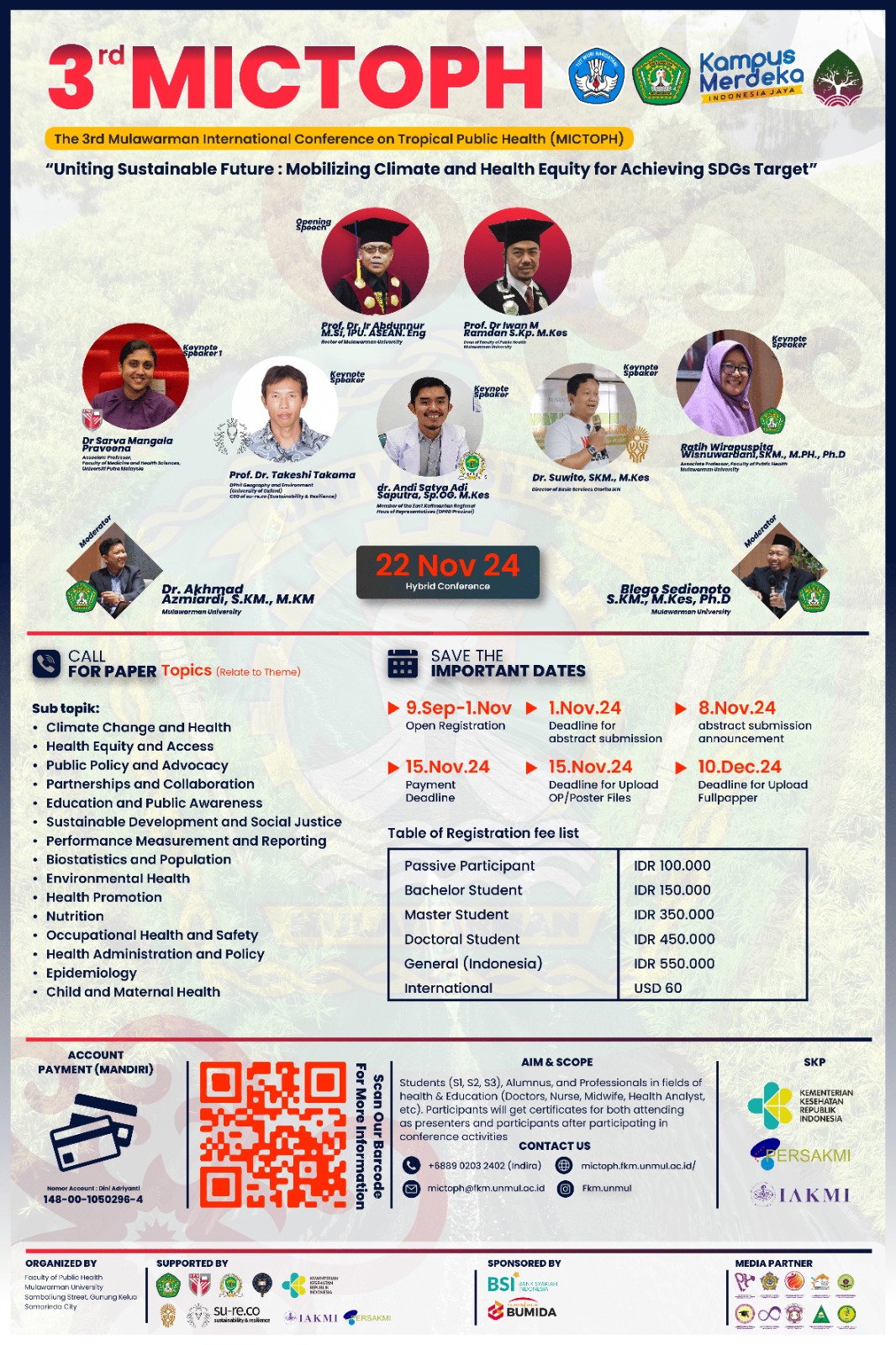Enhancing DHF Program Managers's Capacity in Mapping Endemic Areas with QGIS in Sumenep Regency, 2024
Keywords:
Public Health, Geographic Information Systems, Health Knowledge-Attitude-Practice, DHFAbstract
Background : Dengue hemorrhagic fever (DHF) remains a persistent public health concern in Sumenep Regency, where 73.3% of public health centers (puskesmas) are classified as endemic areas, while the remaining 26.7% categorized as sporadic areas in 2024. Accurate endemicity data are crucial for DHF surveillance, highlighting the need to enhance the capacity of DHF program managers at puskesmas in mapping DHF endemicity. Objective : This study aimed to enhance the capacity of DHF program managers at puskesmas in mapping DHF endemicity at the village level using the Quantum GIS (QGIS) software. Methods : A pre-post test design was employed to evaluate the training’s effectiveness in improving knowledge, attitudes, and skills related to QGIS mapping. Conducted from June to July 2024, the study utilized the Wilcoxon signed rank test for data analysis. Results : The majority of DHF program managers at puskesmas were aged 31-40 years (53.33%), predominantly male (60.00%), held diploma-level qualifications (63.33%), had an educational background in nursing (66.67), and had less than five years of experience in their position (83.33%). Following training, significant improvements were observed in in knowledge (p <0.001), attitudes (p 0.024), and mapping skills (p <0.001). Prior to training, none of the DHF program managers possessed QGIS mapping skills, and only one had developed a DHF endemicity map. Conclusion : Training in DHF endemicity mapping using QGIS significantly enhanced the capacity of DHF program managers at puskesmas in Sumenep Regency. Routine and sustained capacityenhancing efforts are recommended to optimize DHF surveillance outcomes.





